CIBC
I spent 8 months working at CIBC as a product designer on the delivery team, where I was responsible for UX design on a digital card management project.
Project
Delivery
Duration
8 Months
Platforms
Native app, Web (static + responsive)

CIBC
I spent 8 months working at CIBC as a product designer on the delivery team. I spent the majority of my co-op on a digital card management project.
Project Type
Co-op
Duration
8 Months
Platforms
Native app, Web (static + responsive)
Timeline
Semester 1
The first 4 months of this co-op provided me with invaluable mentorship and guidance from a senior designer on my team.
Semester 2
During the second 4 months of my co-op I was trusted with the responsibility of leading the design of multiple projects where I became an integral part of the team.
The Project
I worked on a large, complex project that focuses on digital card management tools for online banking and mobile clients. I led the design of the project which was split across two releases.
Role + Key Responsibilities
Led UX design, working closely with the PO, tech consultants, visual designers and UX writers on the team.
Created UX artifacts: user flows, wireframes and user interface documentation outlining screen relationships and interactions.
Mentored a fellow co-op student who joined the team, and onboarded fellow designers onto the project.
Conducted reviews with internal and external stakeholders as well as business owners.
Maintained regular communication with external teams to ensure consistency across the platform
Kind words from my team...
"Overall, Anne has exceeded my expectations as a co-op. It is clear that she cares a great deal about her work and is committed to learning and growing as a UX designer. She has been instrumental in our team working through the requirements phase for the [card management] project - she asks great questions and she has been a key player in discussions within the pod, with out technology partners and with our stakeholders.
Anne has taken on a level of ownership which is truly impressive for a co-op student. Over the past month, she has stepped up to lead some of the DCMR UID work while we were waiting for a pod UX lead to be assigned, and she was able to produce high quality work under tight deadlines and provide detailed UID walkthroughs for stakeholders and our dev & QA teams. Anne has been an amazing asset to our team, and I hope to continue to work with her beyond the end of her co-op term."
- Emilie Mines, Product Owner
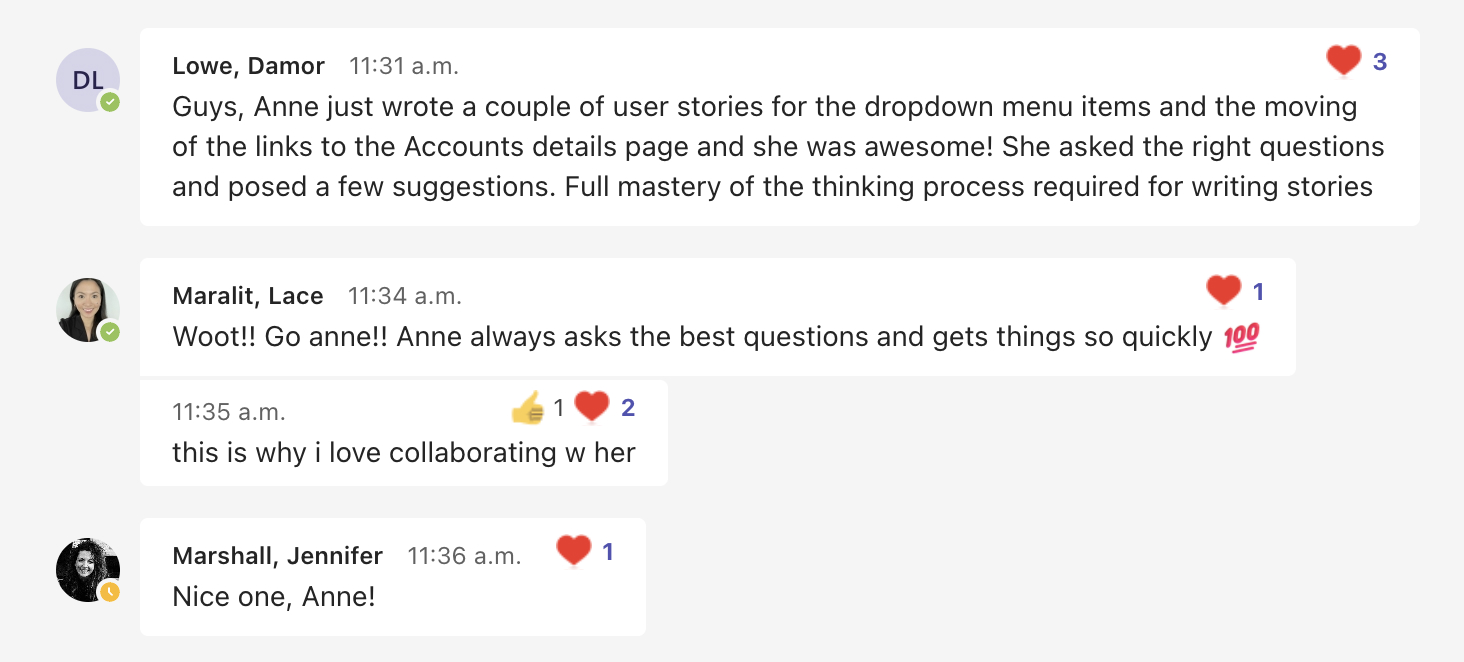
"You’ve been shining with your sharpness and collaboration in these complex requirements!"
- Lace Maralit, Sr. UX Designer
"...When you revealed the new UID for DCMR, our team was thoroughly impressed. We feel that we could leverage the level of detail you went into to create our Client Journey Maps and Pilot Test scenarios which we will be finalizing in the upcoming weeks."
- Omar Safi, Business Analyst
The Design Process
Due to confidentiality, important information has been omitted from this case study.
More information will be added once the project launches.
Understanding the business requirements
The process started with reading our Business Requirements Document (BRD) several times to get a comprehensive understand of our requirements.
To better visualize the requirements we started out but mapping out user stories by general steps on the overall flow
We then created a high level user flow of the potential experience
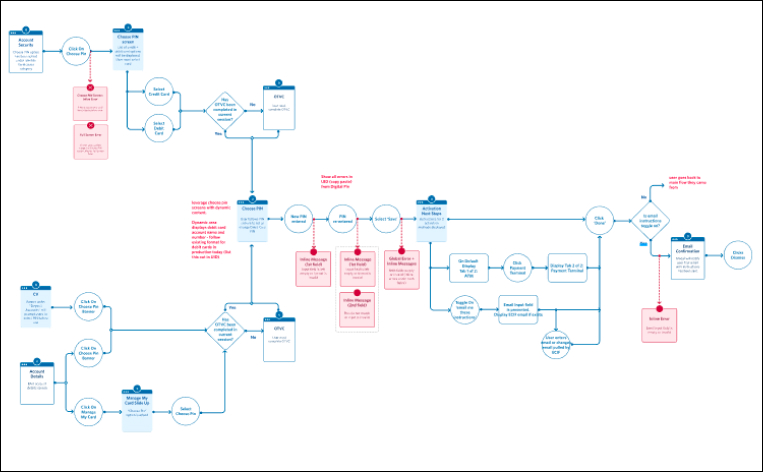
Details of flow purposely omitted to protect confidentiality
Researching current state
Learn how it’s done today
Examining current state required obtaining test accounts and testing out various scenarios on the app, from entry points to error scenarios.
Leveraging existing components
My mentor taught me to always research and consider current state when designing new flow. Any existing flows or screen that we can reuse in our new flow could cut development time and ensure our solution was feasible
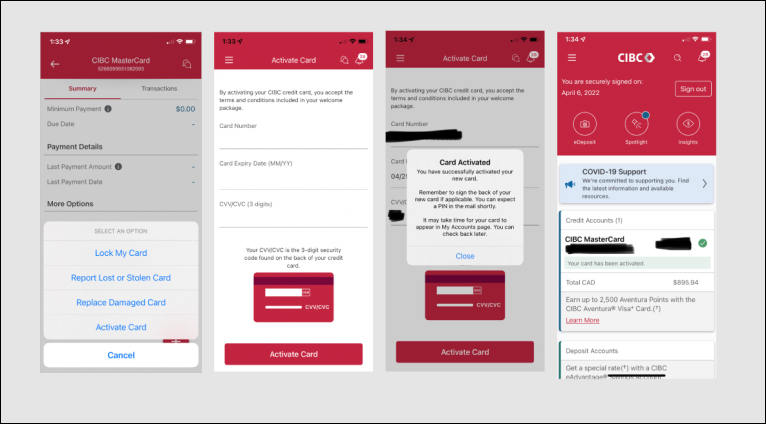
Capturing the current app experience
After gathering a good understanding of current state we were able to further enhance our userflow, determine potential entry points, and account of error scenarios and eligibility criteria.
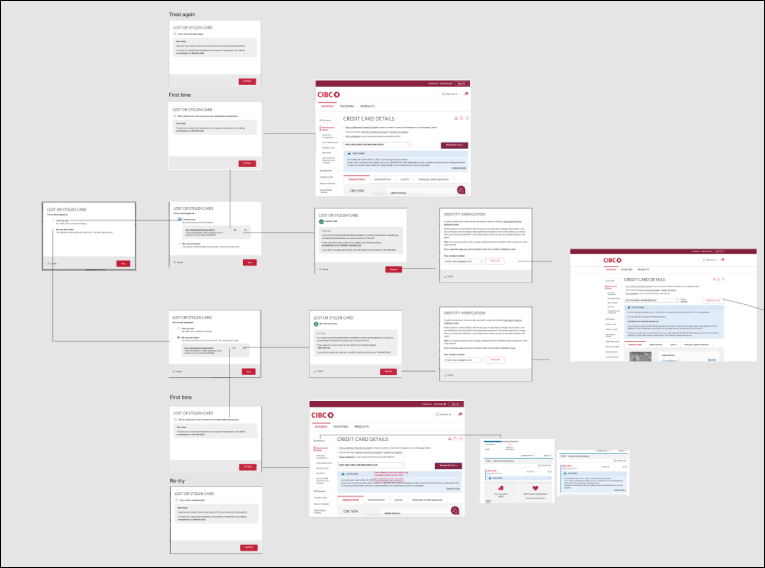
Exploring the current app experience in order to leverage for new project and maintain consistency
Designing
I designed mid-fi flows for CIBC’s native app, static website, and responsive website using the company’s design systems.
I also got to collaborate with visual designer leads to introduce new components into the design system
Understanding Limitations
Ensuring feasibility of solution
Introducing new visual design elements didn’t only require visual design approval, but also tech consultant approval. It was essential to have regular reviews with tech consultants to ensure every part of our solution was feasible.
Considering Future State
We had to consider not only how our designs would integrate with the current platforms, but future builds of the platforms.
Conducting Reviews
Review Constantly
I was encouraged by my UX mentor to have consistent design reviews with our internal team (know as our pod) which consisted of our PO, UX writer, visual designer, QA consultant, BSA, and systems consultant.
Practice makes perfect
Conducting these reviews was very intimidating at first, but the more I presented my designs, the more comfortable I felt running a review, and tailoring the review to the needs of the audience.
Iteration
Each review left me with new insights. Questions raised by the different specialists on the team allowed me to iterate and further improve my solution.
Pivoting in the final stretch
One of the goals of our project was to keep debit card management as consistent as possible with card card management.
We figured that since CC management tools currently exist, implementing similar tools s for debit cards would be quite a simple task.
But that wasn’t quite the case…
We eventually learned that debit cards and credits cards are actually quite different in their technical behaviours, and a 1:1 solution between credit and debit cards would not be possible.
This discovery occurred late in our design phase and required a big pivot in a very short time. I was a key part of overhauling our initial solution and solving for our newly discovered limitations
Key Learnings
The Importance of synching with other cross functional teams
When designing experience for a complex banking system, you cannot work in a vacuum. A single project can touch and impact other flows and projects currently being worked on by other teams.
I learned how important it is to have visibility of what other teams are working on to ensure solutions work in cohesion with one another.
Understanding the system
Banking platforms are very complex and involve many systems and databases interacting with one another.
The unforeseen technical challenge we encountered was a big learning experience in the importance of having early conversation with technology partners to ensure the feasibility of our solution.
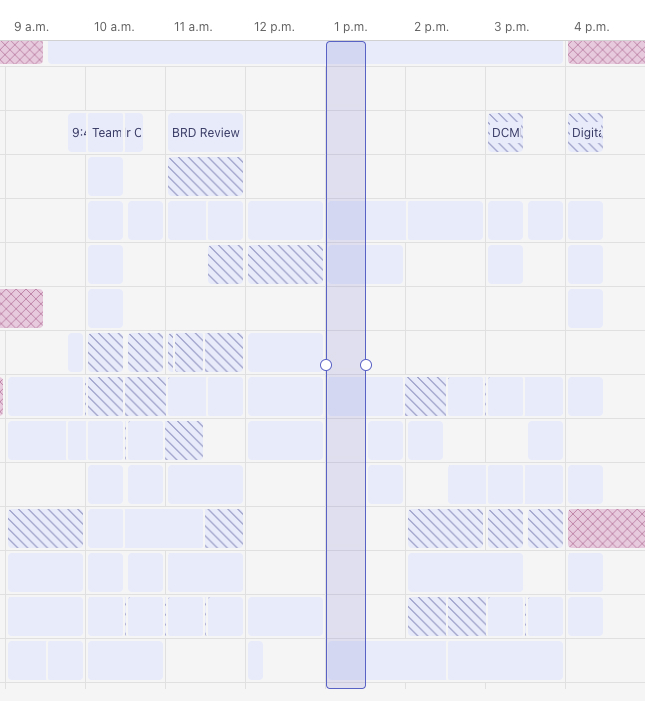
Anticipating Reviews
So many meetings, so little time!
A frequent challenge I encountered was finding time in people’s calendars to hold reviews in order for the project to move forward.
Eventually as I began to anticipate reviews I found it effective to add placeholders in people’s calendars much in advance so that reviews are accounted for and don’t cause delays in the project.
Document Everything!
This project lasted several months and consisted of many technical challenges and pivots, so It was sometimes challenging to recall a conversation from several months back and remember why we made the choices we did.
I learned the importance of keeping thorough documentation throughout the project. This is still something I’d like to get better at as I develop my workflow of tracking design decisions from reviews, meeting, and technical discussions held over different communication channels.